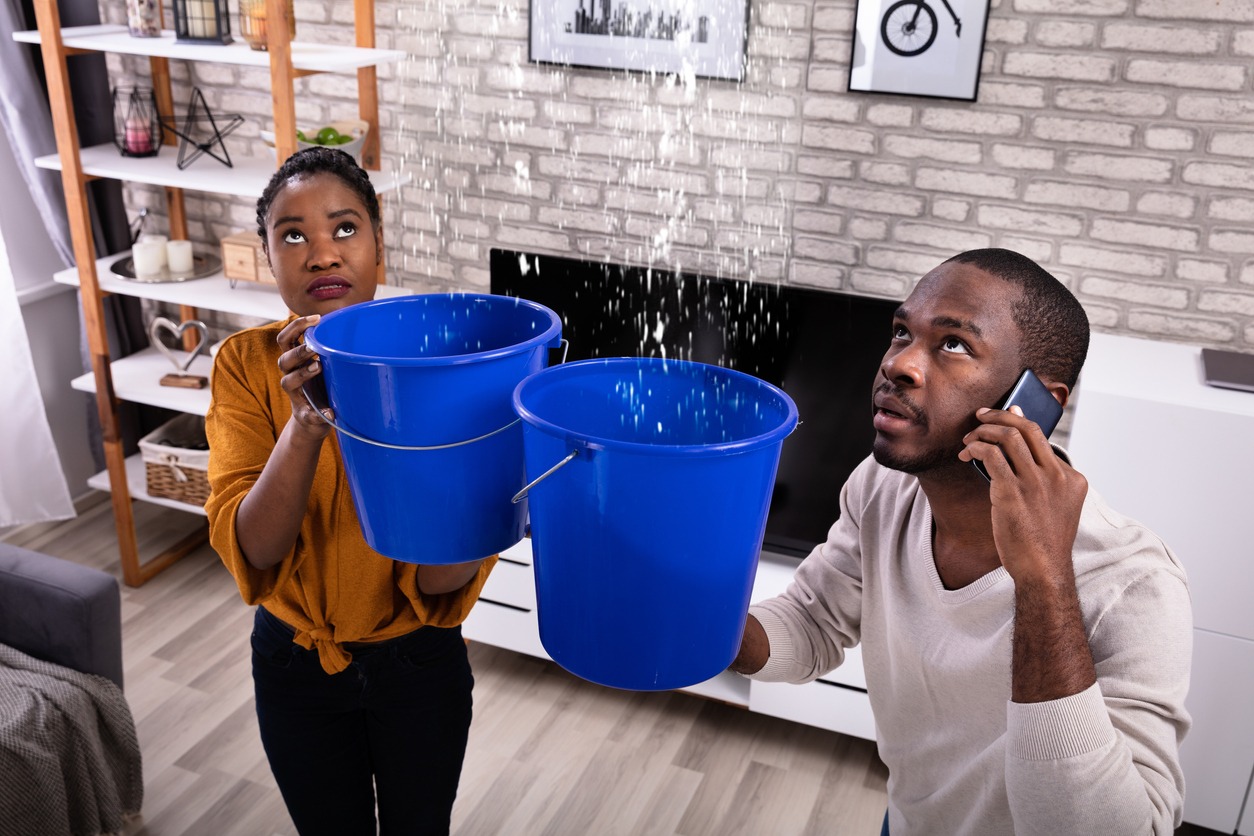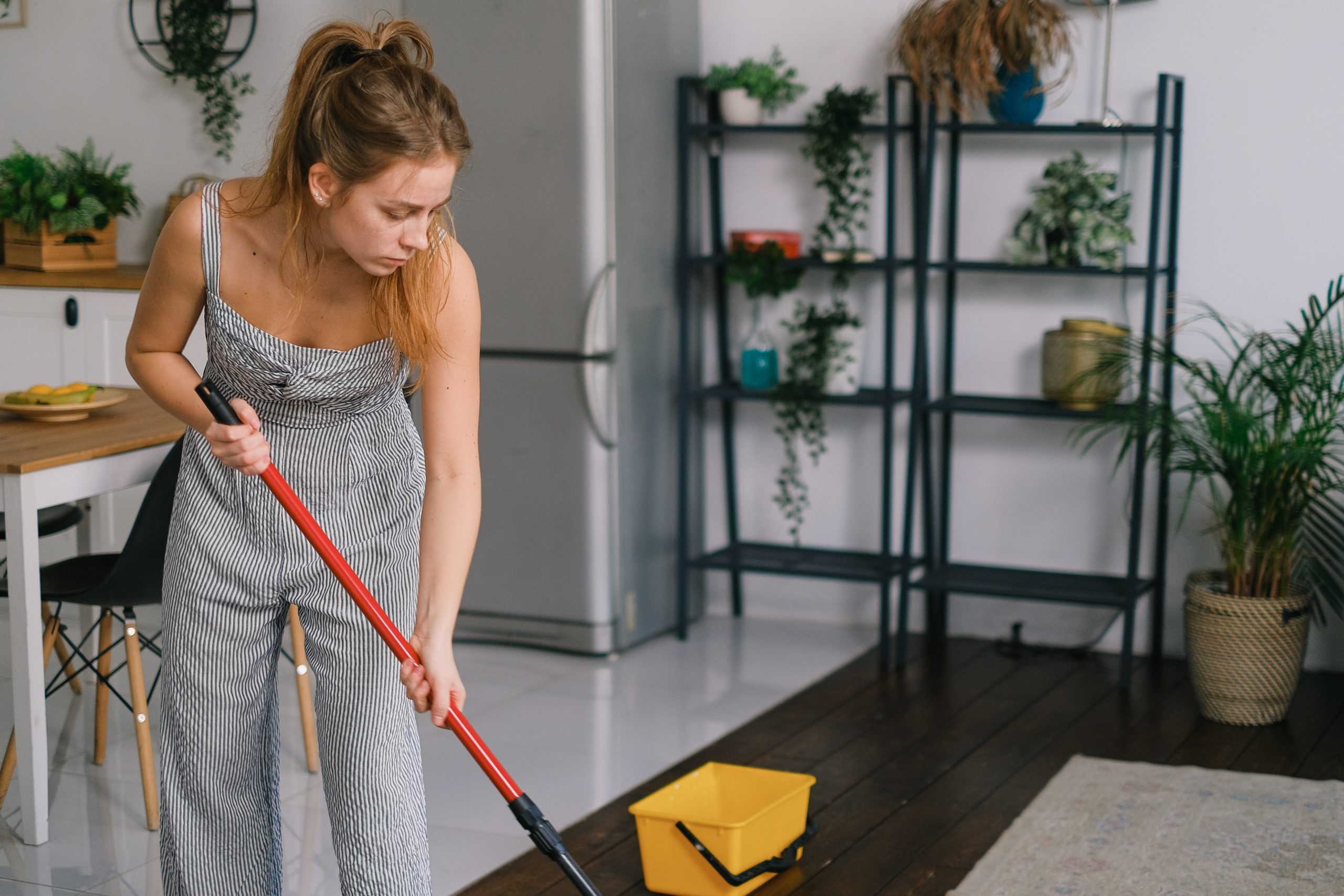The ceiling is one of the things that can make a space look more appealing. However, there are times when issues arise, such as having a leaky ceiling at home. As a homeowner, you are probably familiar with the sinking feeling in your stomach when you look up and see a yellow, leaky patch in the ceiling. You’ll probably wonder how you will find the source of the leak and stop it, and your thoughts will also turn to the cost of repairs.
A leaky ceiling can be a frustrating and costly problem for homeowners. If it is left unaddressed, it may also lead to serious water damage, mold growth, and even structural damage to your home. Luckily, there are some steps that you can take in order to deal with a leaky ceiling and prevent future problems. In this article, we are going to give you tips for identifying the source of the leak, stopping it, and preventing future leaks. Read on below to learn about the tips for dealing with a leaky ceiling.
Signs of a Leaky Ceiling
A ceiling leak can be as apparent as water dripping from your ceiling onto your floor, or it can manifest itself in less obvious ways, such as ceiling fixtures filled with water, insect infestations, or musty odors. The majority of ceiling leaks are ongoing issues rather than isolated incidents. When the leak goes through the ceiling, it can also drip down your walls. Below are the different signs of a leaky ceiling:
Bubbled Paint
A bubbled ceiling paint is one of the usual indicators of a ceiling leak. Interior latex paint is strong enough to hold water, similar to a balloon. With this, the paint layer stops the water from moving through the ceiling plaster or drywall. Therefore, if you notice any bubbled paint on your ceiling or wall, you might want to check for any leaks.
Rancid or Dark Water
Leaking water is often dark in color and will stain light or white ceilings and walls. It may also have a mildewy or even rancid odor. But there are times when the water could also be clear and odorless.
Sagging Ceiling
A leaky ceiling may cause the ceiling material to become saturated and sag over time. Therefore, if you notice your ceiling looking saggy than usual, it may be a sign that there is a water leak.
Mold or Mildew
Moisture from a leaking ceiling may create a breeding ground for mold and mildew. This may also cause health problems for you and your family at home. If you notice mold or mildew on your ceiling or walls, you might want to get it checked for any leaks.
Common Causes of Leaky Ceilings
If you are noticing stains on your ceiling or if it is occasionally dripping, this means that your ceiling is trying to tell you about an issue at hand. It is easy to assume that roof leaks are the cause of a leaky ceiling. However, this is not always the case. There are times when the cause is not your roof at all. Below are some of the common sources of why your ceiling is leaking:
Leaking or Dripping Water Pipes
Plumbing pipes are usually located in the attic. They may cause the water to drip either by leaking or accumulating condensation. This is among the most common causes of ceiling leaks, and it is often misdiagnosed as a roof leak. Therefore, if your ceiling is leaking and there are plumbing pipes in your attic, you might want to check the pipes for any damage that needs to be repaired.
Condensation Inside the House
If your home is not properly vented or insulated or has a whole-house humidifier that is set too high, condensation may build up and cause moisture in the home, particularly in the attic. This may also cause leaky ceilings. To prevent this issue, you need to be mindful of keeping your whole-house humidifier set below 30%.
Clogged Downspouts and Gutters
Gutters and downspouts can get clogged with debris, dirt, leaves, and twigs, particularly over the winter. If your gutters are clogged, water has no way to go but inside, which may cause your ceiling to leak. Therefore, it is important to always ensure that your downspouts and gutters are clear of debris at all times.
Leaking Roof
If you suspect that the cause of your leaky ceiling is a leaking roof, you can check your roof for missing slates, search for damaged siding, and make sure that the attic insulation is enough. Ceiling spots and leaks are worse after rainfall.
What To Do If Water Is Seeping Through The Ceiling
If you notice water seeping through your ceiling, it is very important to take immediate action to prevent future damage. Below are the steps that you can take:
Turn Off the Electricity
If you see water seeping through your ceiling, it is important to turn off the electricity in the affected area. This will ensure that you are safe from the risk of electrocution.
Catch the Dripping Water
Place a bucket or container under the leak to catch the dripping water and prevent further damage. You can also line the bucket or container with a towel or an old shirt to prevent the falling water from splashing out when it comes to the containers.
Cover or Move Your Furniture
If there are any décor or furniture pieces that are in the way of the water, you need to move them to a dry space to prevent them from getting damaged. If you are unable to move bigger furniture pieces, you can cover them with a waterproof cover like plastic sheeting, a tarp, shower curtains, or a waterproof tent.
Soak Up Any Water on the Floor
It is also very important to dry your floors immediately, particularly if you have wooden floors. Not removing water from your floor quickly enough may cause it to develop mold or mildew, or it may also warp. You can use a mop or old towels to soak up the water on your floor. If there is a large pool of water, using a wet/dry vacuum can be helpful.
Make a Small Drainage Hole
It can also be a good idea to assist the leaking water drain down to keep it from spreading across the ceiling and weighing down the structure. To do this, get a sturdy tool or ladder and use a screwdriver to make a drainage hole in the center of the bubbling or dark spot. You need to ensure that there is something beneath to catch the water. You shouldn’t be too concerned about making a hole in your ceiling because if water has already soaked through, you really need to repair that part.
Call a Professional Roofer or Plumber
If the ceiling leak is severe or you are unable to identify the source of the leak, it is best to call a professional plumber or roofing contractor to address the issue. This will ensure that the leak and the root cause of the leak will be fixed and no further damage will happen.
How to Stop a Leaky Ceiling
If you have a leaky ceiling at home, there are temporary and long-term fixes that you can apply to stop the leak. You can learn more about these below.
Temporary Fixes for a Leaky Ceiling
Here are some temporary fixes that you can apply to help stop the leak in your ceiling until a permanent repair can be made:
- Cover the Leak with Plastic: You can use a plastic sheet or tarp to cover the area around the leak to prevent water from spreading to other areas.
- Use Roofing Cement: You can also apply roofing cement to the area around the leak to help seal it temporarily.
- Apply Duct Tape: Duct tape can also be used to cover the leak and prevent water from seeping through.
- Use a Patch: You can apply a patch to the area around the leak. These can be a piece of rubber or metal, which can help stop the water from coming through.
However, keep in mind that these are just temporary fixes and not long-term solutions that will completely solve the problem. It is still important to have a professional inspect and repair the leak as soon as possible to prevent further damage.
Long-Term Fixes for a Leaky Ceiling
In order to fix a leaky ceiling permanently, it is important to address the source of the leak. Below are some of the long-term fixes that you can consider for a leaky ceiling:
- Repair the Roof: If the cause of the leak is from the roof, you need to repair or replace damaged shingles or other roofing materials.
- Seal Around Vents and Chimneys: If the leak is around a chimney or a vent, you may need to apply a sealant to prevent water from seeping through.
- Replace Damaged Flashing: Flashing is the metal material that covers the joints between the roof and other surfaces. If it is damaged or corroded, it may need to be replaced to fix a leaky ceiling.
- Clear Gutters and Downspouts: It is also important to clean clogged gutters and downspouts that may cause water to back up and leak into your home. Always make sure that your gutters and downspouts are not clogged.
- Install a New Roof: If your roof is damaged or old, you may need to replace it entirely to prevent future leaks.
Note that it is important to have a professional assess the situation of your leaky ceiling and make the necessary repairs to make sure that the leak is properly fixed. It is very important to address the source of the leak to prevent future damage and protect your home.
How to Prevent Future Ceiling Leaks
Preventing future ceiling leaks involves taking proactive steps to maintain the infrastructure of your home and address any issues as soon as they arise. Below are a few tips that you can consider:
Inspect Your Roof Regularly
It is important that you check your roof regularly for any signs of damage, such as missing or damaged shingles. If there is any damage, ensure that you make repairs as soon as possible to prevent leaks on your ceiling.
Trim Trees Near Your Roof
It is also best to trim any trees or branches that are close to your roof to prevent them from falling and causing damage.
Monitor Signs of Moisture on Your Ceiling
You should always keep an eye out for any signs of moisture, like water stains on your ceiling or walls. If there are any signs, make sure that you address them as soon as possible.
Hire a Professional
It is best to hire a professional to perform regular inspections and maintenance on your roof and other areas of your home to find any issues before they become major problems and cause leaks to your ceiling.
Conclusion
Dealing with a leaky ceiling is indeed stressful and inconvenient. But there are steps that you can take in order to address the issue and prevent future damage to your home. Once you notice any signs of a leaky ceiling, you should act fast to minimize the damage and find the source of the leak. Temporary fixes may help stop the leak until a permanent repair is made. Also, if you are unsure of how to address a leaky ceiling properly, it is best to hire a professional for assistance. We hope this post helped you learn more about dealing with a leaky ceiling.







